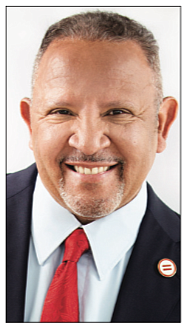Pence is wrong about inequity in education, by Marc Morial
7/13/2023, 6 p.m.
“Decades of research indicate that racism undergirds our public institutions and shapes various aspects of our contemporary society, including public policies. These policies, in turn, shape local school practices that impact the day to day experiences of students in classrooms. Even as schools are shaped by broader trends of racial inequality, they serve to maintain – or in rare cases disrupt – racial inequality for students and families.” – The Inequality Project, Columbia University.
Former Vice President and current presidential candidate Mike Pence, who presided during the most aggressive rollback of civil rights in more than a century, brazenly told the nation this week he doesn’t believe there is racial inequity in the nation’s education system.
Confronted with evidence to the contrary, he ducked the question. “I haven’t seen your studies. I don’t know the numbers.”
We do know the numbers. And Mr. Pence is dead wrong.
The National Urban League’s most recent Equality IndexTM for education was 74.3. Inspired by the Three-Fifths Compromise of 1787, which counted Black Americans as “three-fifths” of a person. The Equality Index is the National Urban League’s semiannual calculation of the social and economic status of Black Americans relative to white people. Under full equality, the Index would be 100.
Because of the lag in data collection and analysis, the most recent Equality Index does not capture the full effect of the learning disruption during the COVID-19 pandemic, which hit Black students the hardest. But even before factoring in the pandemic, Black students haved lost ground since 2005, when the education Index was 77.2.
More than 100 separate metrics are used to calculate the education Index, and Black Americans have achieved parity with white people in almost none of them. About twice as many Black students are taught by unqualified or underqualified teachers. Black boys are twice as likely as white boys to be suspended from school, and Black girls are three times as likely to be suspended. Black students are more than twice as likelyaswhitestudentstolive in a home without broadband internet access.
A more recent study found that school districts where the majority of students enrolled are students of color receive $23 billion less in education funding than predominantly white school districts. Districts with a high percentage of students of color receive, on average, 16 percent, or about $2,200, less per student than largely white districts.
Unsurprisingly, the relative lack of resources and heavier disciplinary burden for Black students contribute to a persistent racial achievement gap: pre-pandemic, fewer than 15% of Black eighth-graders were reading at or above proficiency, compared to 42.5% of white eighth-graders. Only 13.6% of Black students were at or above proficiency in math, compared to almost 44% of white students.
Whether Mr. Pence really doesn’t “know the numbers” as he claims, we cannot say. But his choice not to acknowledge racial inequity in education aligns with the so-called “anti-woke” movement some extremist politicians have embraced, hoping to capitalize on a wave of white grievance and racial resentment.
Fortunately, a solid majority of Americans still reject the notion that racial inequality doesn’t exist. But if Mr. Pence and his fellow distorters of history have their way, the next generation of Americans will grow up oblivious to the effects of historic and systemic racism and allow white supremacy not only to persist, but flourish.
The writer is the president and CEO of the National Urban League.






